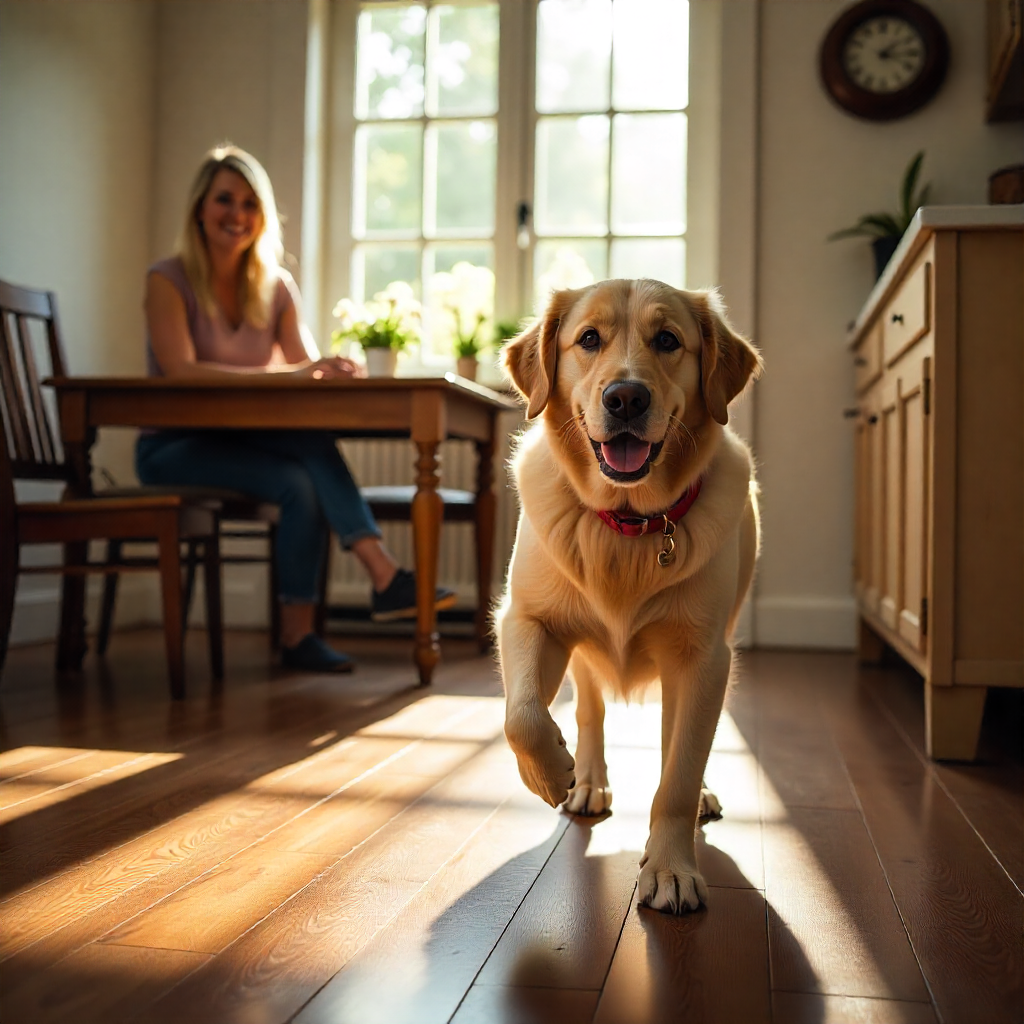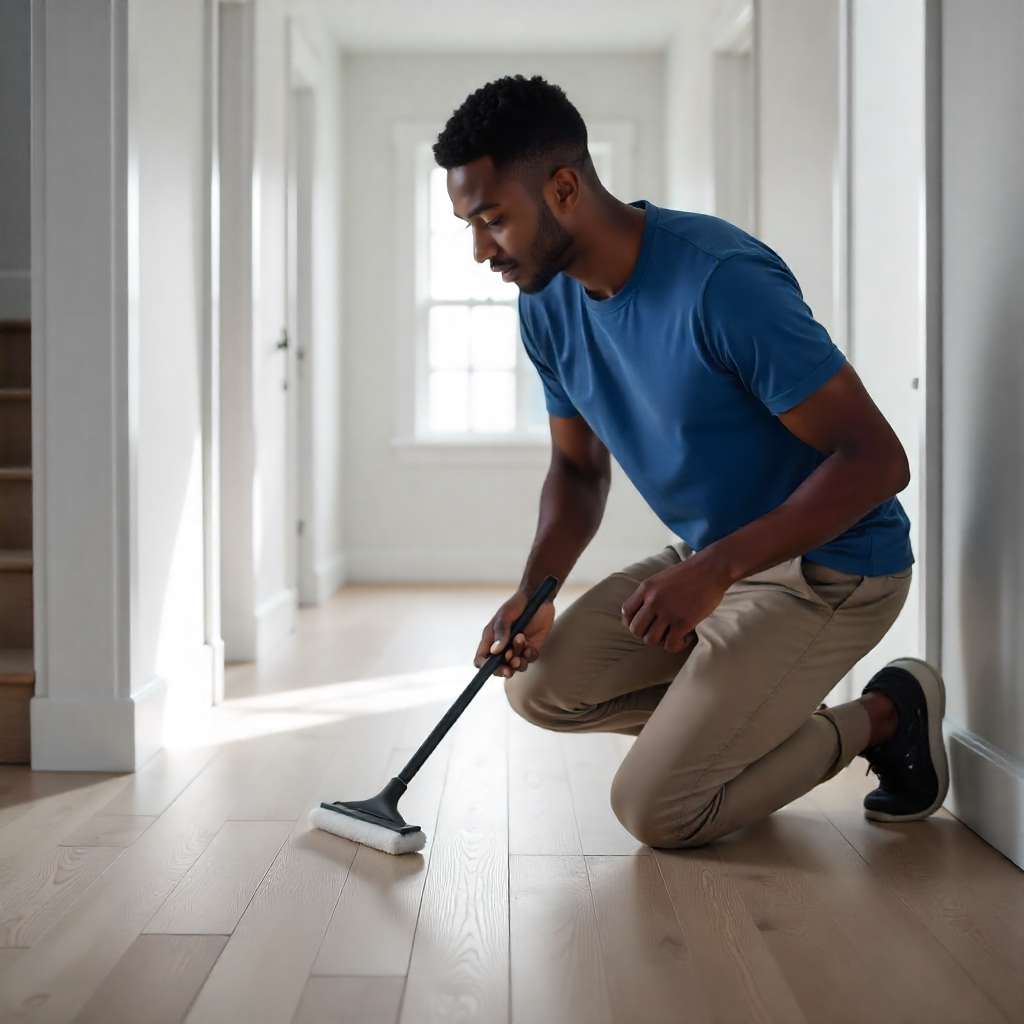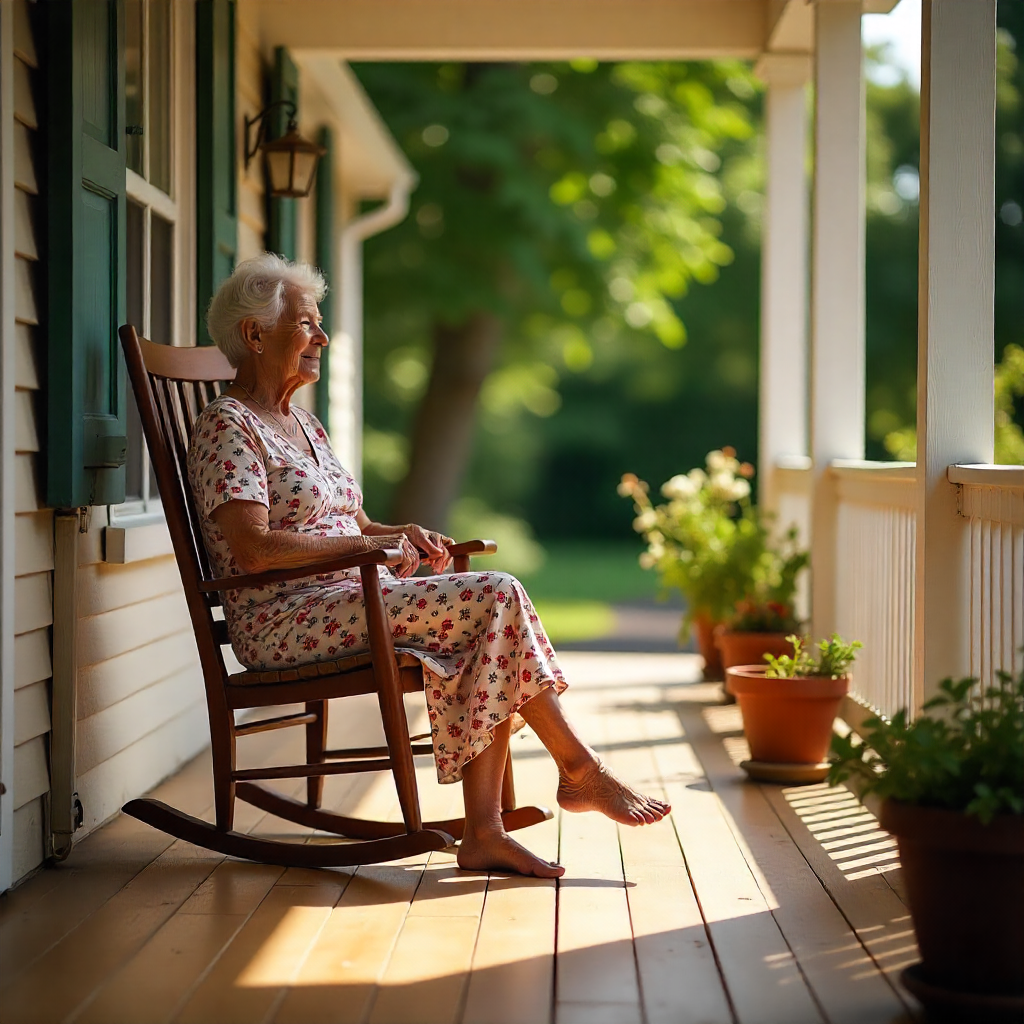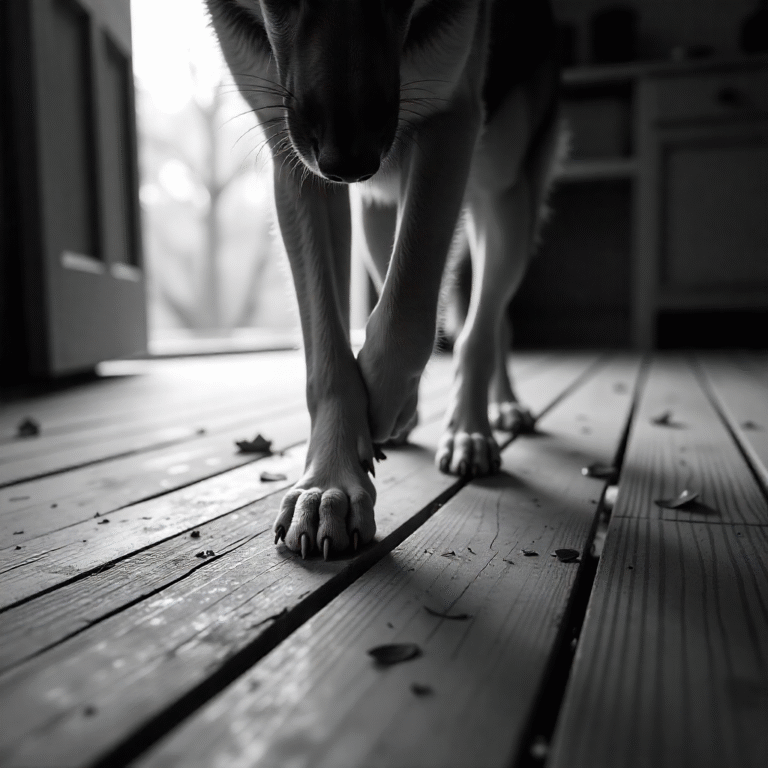How To Protect Hardwood Floors From Scratches
Hardwood floors are known to add timeless beauty and value to any home, officer anywhere you place them. The natural warmth and durability of hardwood floors make them a favorite choice among home and office owners.
Yes, they bring warmth, elegance, and timeless charm to any home. But it is very important to know that the beauty of hardwood floors also makes them very vulnerable. One of their biggest enemies?? SCRATCHES. One misplaced chair leg, an energetic pet, or even dirt under your shoes can leave behind scratches that dull the surface. The good news? Protecting hardwood floors from scratches isn’t just possible — it’s easy with the right strategies and a little consistency.

In this post, I’ll break down a well-detailed, comprehensive and proven ways to protect hardwood floors from scratches. I will also be answering frequently asked questions, and recommend some of the best and most trusted products that will definitely help preserve the shine and integrity of your flooring and protect your hardwood floors from scratches.
From moving furniture and pet claws to high heels and everyday foot traffic, scratches can appear quickly if you’re not proactive. But I have a new.- A good news! With this article, protecting your hardwood floors from scratches is easier than you think—when you know the right strategies and products to use.
In this guide, you’ll learn:
- Why hardwood floors get scratched.
- Proven methods to prevent damage.
- Essential tips for pet owners and busy households.
- Frequently asked questions homeowners have.
- Recommended products (available on Amazon) to help protect and preserve your hardwood floors.
Why Do Hardwood Floors Scratch Easily?
Even though hardwood is durable, it’s still vulnerable to surface damage. Scratches occur because the truth is, several factors contribute to why hardwood floors scratch easily, and understanding them can help you better protect and maintain your flooring.
Hardwood floors scratch easily because wood is a natural material with varying hardness, its finish can wear down, and daily life introduces grit, pressure, and movement that leave marks.
Below are the major reasons why hardwoods floor scratch easily:
1. Wood Is a Natural Material
Hardwood, despite being durable, is still an organic material. Its surface can only withstand so much force before showing wear. Unlike synthetic flooring, wood fibers can dent or break under pressure, leaving visible marks.
2. Hardness Varies by Wood Species
Not all hardwoods are equally hard. For example, oak and maple are more scratch-resistant compared to softer woods like pine or birch. If your flooring is made from a softer species, it will naturally scratch more easily.
3. Finish Wear and Tear
The protective finish on hardwood floors acts as a shield, but over time, this coating can wear down. Once the finish becomes thin or dull, the wood underneath is more exposed and vulnerable to scratching.
4. Daily Wear from Grit and Dirt
Dust, sand, and tiny debris act like sandpaper under shoes or furniture. Even when invisible to the eye, these small particles can scratch the surface of hardwood with repeated movement.
5. Foot Traffic and Pets
High-traffic areas such as entryways or living rooms are more prone to scratches. Additionally, pets with sharp claws can leave marks on the surface, especially if the wood species is softer.
6. Furniture Movement
Dragging furniture without protective pads is one of the most common causes of deep scratches. Even lightweight chairs can dig into the floor if moved often.
Knowing the cause is the first step in prevention.

Proven Ways to Protect Hardwood Floors from Scratches
1. Use Furniture Pads and Protectors
The most common cause of scratches is moving furniture. Invest in felt furniture pads or rubber protectors under the legs of chairs, sofas, and tables. These pads create a soft barrier between your furniture and the wood.
Pro tip: Replace felt pads every few months, as dirt buildup can make them abrasive.
Recommended on Amazon:
a. X-Protector Premium Furniture Pads
I wish I had found the X-Protector Non Slip Furniture Pads sooner! They are super easy to use and incredibly effective. I have a smaller, lightweight L-shaped couch that used to slide around constantly on my hardwood floors. I didn’t want to use a rug underneath, so I was getting really frustrated.
Since applying these pads, my couch hasn’t moved an inch. I no longer need to keep it pushed against the wall just to keep it in place, and my living room layout looks so much better now—not to mention it’s more functional, too.
Highly recommend this product if you’re tired of sliding furniture and want a clean, rug-free solution that actually works!
2. Place Rugs and Mats in High-Traffic Areas
Entryways, hallways, and living rooms often take the heaviest beating. A well-placed rug or mat can catch dirt and debris before it reaches your hardwood floors.
Look for rugs with non-slip, non-rubber backings, since rubber can discolor hardwood over time.
Recommended on Amazon:
a. Non Slip Indoor Door Rug
I love these carpet pieces. They are made with good quality fabric, they’re soft, comfortable, plush, and functional (nice and thick so I didn’t get tired standing on my feet). They look great in my new kitchen. I ordered 3 different sizes and I’m happy with all of them. They fit great. They have a rubber back so they don’t slip and protect my hardwood floors from spills.
Thick and rich feeling, stays put, doesn’t curl. Easy to vacuum or launder. Great absorption for spills and splatters. The rich brown color is a great match for our bamboo hardwood flooring. Great value for the price! We liked it so much we replaced three older rugs with more of these!
b. Non Slip Rug Pad For Hardwood Floors
This non slip rug pad for hardwood floors is needed for an area run on tile floor in foyer that constantly was sliding around. It worked perfectly…has not budged! Also added a bit of cushioning so win-win! Love it!
3. Keep Floors Clean and Dust-Free
Regular cleaning goes a long way in preventing scratches. Dust and grit act like sandpaper when walked on.
- Sweep daily with a soft-bristle broom.
- Use a microfiber mop or vacuum designed for hardwood.
- Avoid excessive water, which can damage wood.
4. Trim Pet Nails Regularly
Pets bring love and joy—but also scratches. Keeping your dog or cat’s nails trimmed reduces the risk of deep scratches. You can also consider dog booties or claw caps if your pets are particularly active indoors.
Recommended on Amazon:
Casfuy Dog Nail Grinder
I have had this Pet Nail Grinder for a year now, and have used it weekly since it arrived. Following the clear and simple directions, it took very little time for my pup to learn to tolerate having her nails trimmed with the nail grinder. The grinder is very quiet and does a very good job. With just a couple of seconds per toe each week (a total of less than 5 minutes!) my dog’s nails are always the correct healthy length. I follow up her pedicures with Musher’s Secret paw wax for healthy toe nails and paw pads. I highly recommend this Pet NailGrinder.
Soft Claws Nail Caps for Dogs and Cats
The soft paws are amazing!! Very easy to apply and my kitten did not try to take them out at all. He is now unable to scratch the furniture. Please note this is not harmful to the kitten at all and they are still able to use their claws as normal. They just can’t actually scratch the furniture anymore! Would definitely recommend to anyone who wants to enjoy scratch free furniture!
5. Adopt a “No-Shoe Policy” Indoors
Shoes carry dirt, stones, and grit that easily scratch hardwood floors. Encourage a no-shoes rule indoors and provide slippers or socks for comfort.
Place a shoe rack or mat near the entryway to make this habit easier for family and guests.
6. Refinish and Protect with Floor Sealants
Every few years, your hardwood floors may need a fresh finish. A quality polyurethane coating can act as a protective shield against scratches. Refinishing not only protects but also restores the shine of your floors.
Recommended on Amazon:
Bona Mega Wood Floor Finish
Top of the line flooring product! It is clear and leaves a beautiful shine. First coat dries within 2hrs. Very happy with the durability of this product. Just a week after applying (and letting it dry 72 hours), we had a guest with a dog. No issues with claw marks or cleaning up messes. Floor looks as good as new. Simple and easy to apply, however, I recommend using a Bona Roller. Definitely worth the money to protect your hardwood floors!!! Instructions are on the container!!
Same product professional flooring companies use! Great product and great price!
Minwax Super Fast-Drying Polyurethane
This polyurethane clear coat is outstanding! We have tuff weather here in Las Vegas, sun beats up my wooden work tables outside. Rain then rips the paint off of them…. UNLESS I top coat with a clear polyurethane like this one! It paints and spreads out quickly and smoothly. And best of all, its water based and soap and water clean up of the brushes and tools is quick and easy! Easy to clean!

Frequently Asked Questions About Protecting Hardwood Floors
1. What is the best way to prevent scratches from chairs?
One of the biggest culprits behind scratches on hardwood floors is furniture movement, especially dining chairs that are pulled in and out daily. The best solution is to apply felt furniture pads or chair leg protectors to the bottom of each chair leg. These pads create a soft barrier between the wood and the floor, reducing friction and preventing scratches.
However, many homeowners make the mistake of attaching pads once and forgetting about them. Over time, dirt and grit can accumulate underneath, turning the felt pad into sandpaper. For best results:
- Check and replace pads regularly (every few months).
- Wipe chair legs and pad surfaces to ensure no debris gets trapped.
- Consider using slip-on chair leg protectors (silicone covers) if you want a longer-lasting solution.
A simple habit like this can save you from costly refinishing bills in the future.
2. Will vacuuming damage hardwood floors?
Vacuuming itself doesn’t damage hardwood floors — the wrong type of vacuum does. Many standard vacuums are designed for carpets and come with a rotating beater bar or stiff bristles that can scuff the finish of your hardwood over time.
To safely vacuum hardwood:
- Use a vacuum designed specifically for hardwood floors. These models usually come with soft bristle brushes or felt-lined wheels.
- Always disengage the rotating brush (if your vacuum allows).
- Opt for a canister vacuum with rubber wheels, which glides smoothly without leaving marks.
Done correctly, vacuuming is actually better than sweeping, because it removes fine dust and grit that sweeping sometimes pushes around — grit that eventually scratches the floor.
3. Can dogs live on hardwood floors without scratching them?
Yes, dogs can absolutely live comfortably on hardwood floors, but responsible care is required to minimize scratches. Dogs’ nails are the primary issue — when nails grow too long, they act like tiny chisels against your hardwood.
To prevent this:
- Trim your dog’s nails regularly (every 3–4 weeks).
- Use area rugs or runners in high-traffic areas, especially where dogs like to run or play.
- Place rugs near entryways, since dogs often track in dirt or grit from outside.
Another tip is to consider applying a durable finish or scratch-resistant sealant to your hardwood if you have multiple dogs or very active breeds. This adds a protective layer, reducing long-term wear.
With consistent care, dogs and hardwood floors can happily coexist.
4. Do rugs damage hardwood floors?
Rugs themselves don’t damage hardwood floors, but the wrong rug backing can. Rugs with rubber, latex, or vinyl backings trap moisture and chemicals that may discolor or stain hardwood over time.
To protect your floors:
Lift and clean under rugs regularly to prevent dirt buildup.
Choose rugs with natural fibers (cotton, wool) or those labeled as hardwood-safe.
Always use a rug pad underneath — but avoid rubber pads. Instead, go for felt pads or specialized non-slip pads made for hardwood floors.
- Best Dog Car Seat For French Bulldog - October 1, 2025
- How to Prevent Scratches on Hardwood Floors from Dogs - October 1, 2025
- How To Protect Hardwood Floors From Scratches - October 1, 2025



